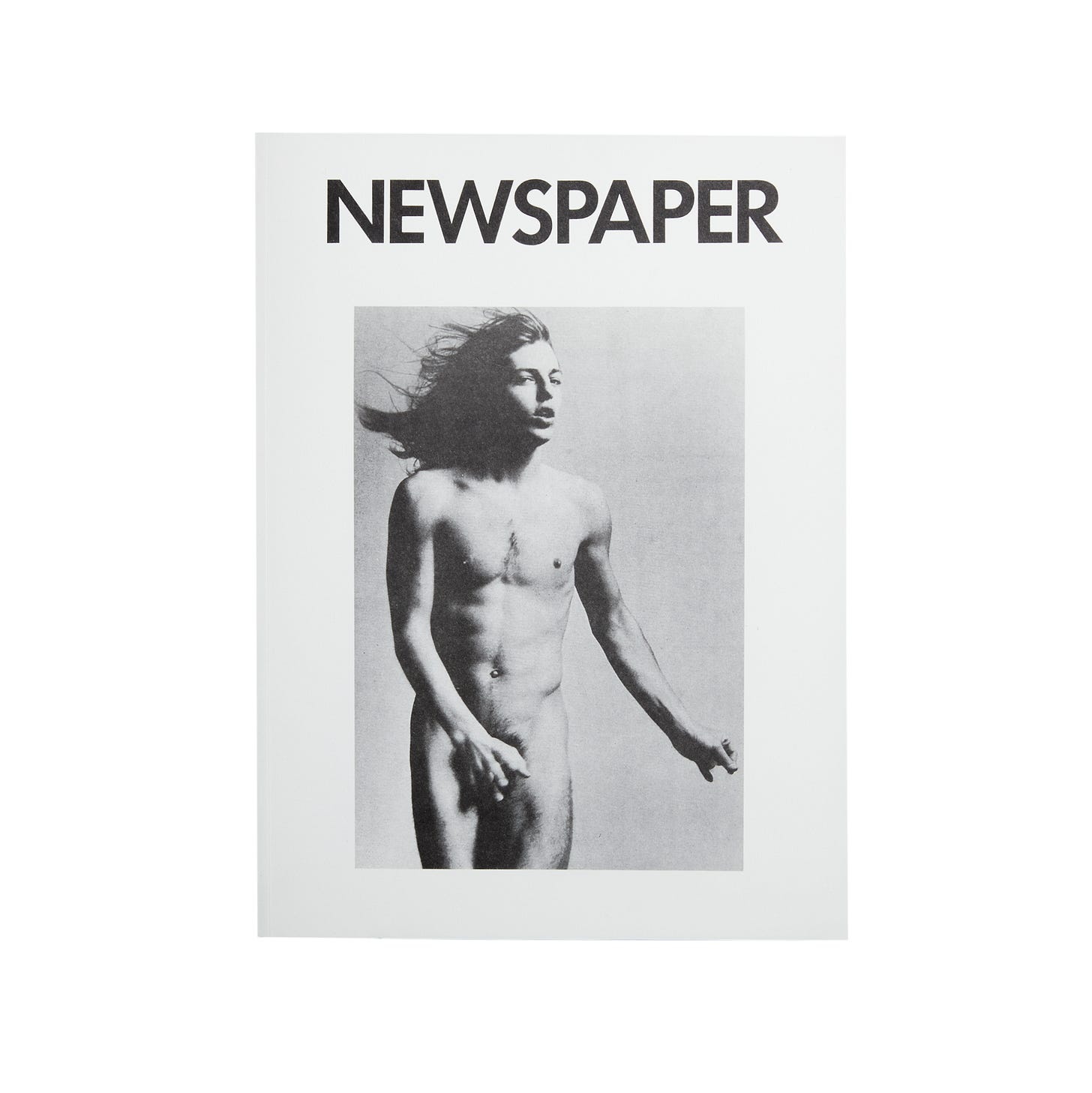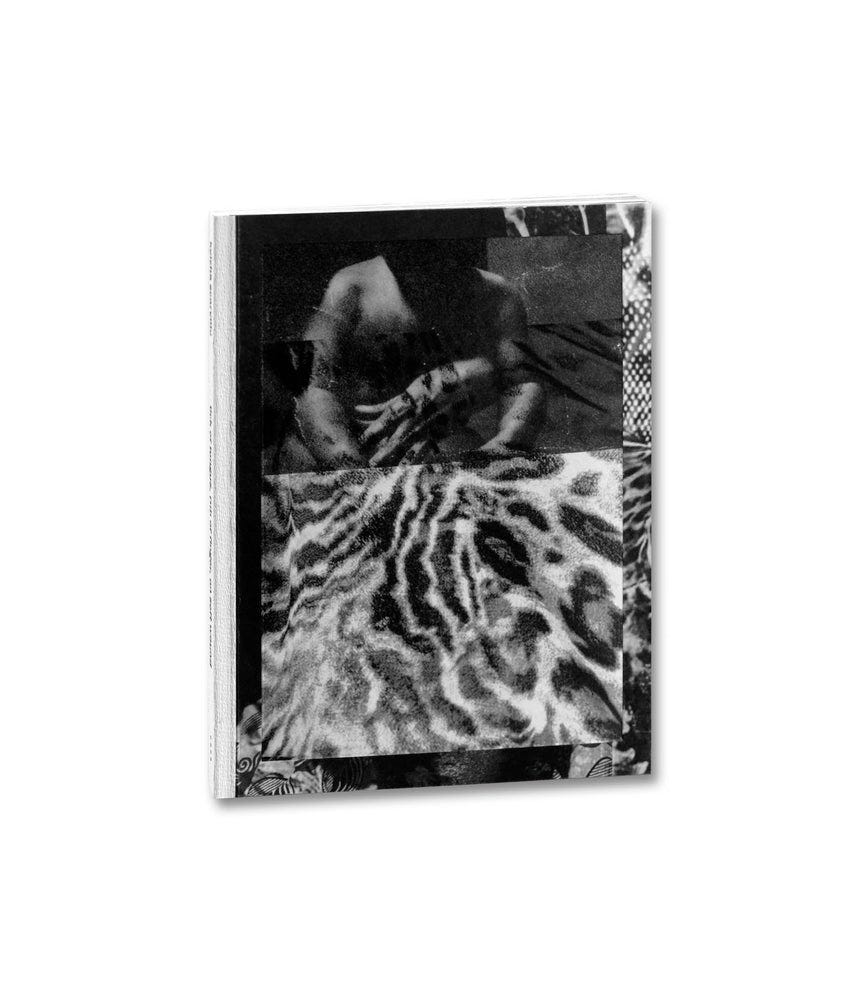My Top 5 Photobooks of 2023
'Tis the season of the climatic, definitive book list of the year, or is it?
In the last few weeks, I’ve begun to see many “top photography books of 2023” lists, and soon after, I saw people respond to other peoples’ lists with their own lists, and I suppose my list can be read as a list to all those lists. There were lists from online blogs, magazines, online bookstores, and then there were lists from artists like Jordanna Kalman who noticed one curated list had only 12 women out of 41 people rating their top photography books. Kalman, as a response, invited 41 women to list their favorite photography book— by a woman or not— and it didn’t have to be published this year. I encourage everyone to check out the responses on Kalman’s Instagram page, under story highlights as “41 women,” here.
In an industry with a select few institutional prizes for a book niche as a photography book— like Aperture and Paris Photo’s book prize or the Lucie Foundation’s book prizes— making a list feels like crowning an artist or book with a label: Winner. I don’t intend to call the books I have listed as “winners” compared to any other book I chose not to list; instead, these books Invoked new concepts, ideas, and understandings for my own understanding of the photography book genre. Some of these books utilized unconventional formatting, framing, and printing, or maybe just revealed a new area of potential topics for forthcoming photography books to respond to. This was my thinking when I made my list last year of photography books, and this is what I meant to convey in my list below. In my ongoing interviews with art and photobook publishers, I realize how much books of the past inspire artists of today, and I can easily see artists turning to these books for inspiration, motivation, and guidance in constructing their books, whether formally or conceptually. So here’s the books, in no particular order.
Speaking of awards, stay tuned for a new podcast episode in the new year with an art publisher known for their photography book award! If you haven’t listened already, check out my two previous episodes with Martha Naranjo Sandoval from Mataraile Ediciones and Fernando Zelaya from ‘cademy.
Kristof Titeca: Nasser Road, Political Posters in Uganda (The Eriskay Connection)
I didn’t think I was going to be struck by a book with contents as didactic as its title, but the power of the book comes from its direct translation or rather, replication of the included political posters/calendars. The book seems to be the very posters folded into a book format, with background text and information printed on the posters’ backsides on what you might imagine these posters’ backsides actually to look like— scratchy cardboard. Sequenced as if you’re flipping through posters in a rack, the context of these posters seeps through in between the posters’ behind. It is a metaphorical and physical translation of a local economy. This notion of a local economy clicked after in my recent conversation with Art21’s Assistant Curator Jurrell Lewis, he used the same words to describe Canal Street Research Association’s recent “fictional office holiday party” at nonprofit Creative Time’s offices where a subway platform singer sang tunes and tables were covered with churros sourced from the Street Vendor Project, and chocolate fondue. Anyways, as I saw it, Titeca’s book on Uganda’s political poster industry, business, and culture provides both the context and physical artifact in the same breath.
Takuya Ishikawa: Rao's Newsstand (Self-published)
I should note that I haven’t seen this book in person as the book is not stocked anywhere in the U.S. and must be ordered from Japan. Nonetheless, I was struck by a Japanese photographer’s interest in something mundane as a view from a newsstand. This popped up in my research on the recent Lucie Book Prize finalists. Born in Chiba, Japan and after some time spent traveling, Ishikawa moved to New York City in 1996 where he would spend his early 20s. For the next eight years, he made a body of work behind the counter of a newsstand across from the iconic Greenwich Village storefront, Village Cigars. The photographs themselves are nothing extraordinary, but rather Ishikawa’s commitment to a mundane observation. For a born and raised New Yorker like myself, these pictures are intensely valuable with their simple appreciation for the everyday interactions of a changing city. Formally identical, the customers and their appearance separate the images— outside of the change in weather and time of day. The book covers been silk-screened by disabled adults through a program led by the community magazine Tosacho Monogatari in Tosa, Kōchi Prefecture, Japan.
Christopher Currence: reappraisal (Self-published)
I had been following Currence’s work for a while since I recognized in his portraits many of the artists and musicians I admired growing up in New York including MIKE, Wiki, Standing on the Corner, and KeiyaA, and photographers as well including Ari Marcopoulos. I picked up one of his first zines Inshallah. (2nd Printing) (2020) at last year’s Printed Matter & 8-Ball Community East Village Zine Fair from Currence himself and got it signed. Since then, I’ve felt lucky to see his work in person at a group show, co-curated by friend and artist Saint Piñero, at Millennium Film Workshop in Bushwick, Brooklyn in March 2023. While I’ve enjoyed Currence’s commitment to self-publishing, reappraisal seems to exceed and top all his earlier zines in presenting a fuller stretch of work, showing photographs from the last six years. In presenting some of his last books’ work in reappraisal, he unites his past artist books balancing them with a foreward to the work by friend, writer, and poet Stephanie Njeri Wambugu. At 130 pages, the book covers a wide range of photographs that are in color, black and white, traditionally bordered, and some with exposed negative edges.
Newspaper (Primary Information)
Every year it seems like there’s a photography book that is a brick of information— even though the publisher’s later release this year might be more physically heavy, David Wojnarowicz: Dear Jean Pierre (Primary Information, 2023)— this one will capitaive your attention in each page with its rich amount of work and its originally preserved lack of words and captions surrounding the artwork. I remember anxiously responding to Speciwomen founder Philo Cohen’s Instagram story selling one of the first copies of this book. My fascination with this book may be due to its downtown New York significance, its inclusion of the late Diane Arbus’s work during her lifetime, how it was co-edited by the late Peter Hujar in his 2nd Avenue apartment, or all three. Beyond my own interests, this collection of the former East Village periodical Newspaper stuck out though in its long journey from being picked up in 2015 in well-known downtown manager and promoter Danny Fields’s closet by then assistant Marcelo Gabriel Yáñez. Unsure of its significance, and without much information, Yáñez researched the periodical’s history and eventually published their own volume of Newspaper with queer contemporary, emerging photographers and artists in 2016 and 2017— still as an NYU undergraduate student— and as an exhibition with the original Newspaper printings in Atlanta, Georgia in 2017. Originally published with zero text and captions, Primary Information presents them alongside an index of the contributing artists as well as a chronology of the publication’s history with its founding by co-editor Peter Hujar. I recommend listening to Yáñez’s 2019 conversation with artist and podcast host Jordan Weitzman on Magic Hour.
Keisha Scarville: lick of tongue, rub of finger, on soft wound (MACK)
It’s hard not to be biased with this one given Scarville was my high school photography teacher. I’ve seen her work often in a group show in the Lower East Side at a now-defunct gallery during high school, at Higher Pictures Generation in DUMBO, and sent install shots by my friend Isis Pinheiro— and another former student of Scarville’s as well— at the opening of Scarville’s solo-show at Huxley Parlor in London last year. Before Scarville’s book signing and conversation with writer and poet Pamela Sneed at the International Center of Photography, I had seen her speak at the Penumbra Foundation earlier this year.
Whereas I expected a traditionally formatted monograph from a publisher like MACK, lick of tongue, rub of finger, on soft wound seems anything but. Bringing together a variety of works, some white-bordered, some full bleed and some collaged, the book acts as a potent package of Scarville’s work, with little room to look away from anything that isn’t her own creativity. Bounded softcover in collaged work, the book seeps into the background of a space without a prominent title on its cover. Looking at Scarville’s work, you must make an effort to sift through the layers of black and white she creates in her attention to fabric, silhouette, and the natural landscape.
And with the end of 2023, I’ve already begun looking toward 2024 as there are many forthcoming books to look out for like Andrea Modica: Catholic Girl (L’Artiere Edizioni, Jan. 2024) and a massive collection of vernacular and archival Palestinian photographs in Against Erasure: A Photographic Memory of Palestine Before the Nakba (Haymarket Books, Feb. 2024) with a forward by Palestinian writer and journalist Mohammed El-Kurd. I’m excited to see what other monographs, artist books, exhibition catalogs (particularly LaToya Ruby Frazier’s upcoming survey in February at MoMA), and all other publishing endeavors are brewing in the coming year. Till then, happy new year.








Love the reviews esp. Rao’s Newsstand!